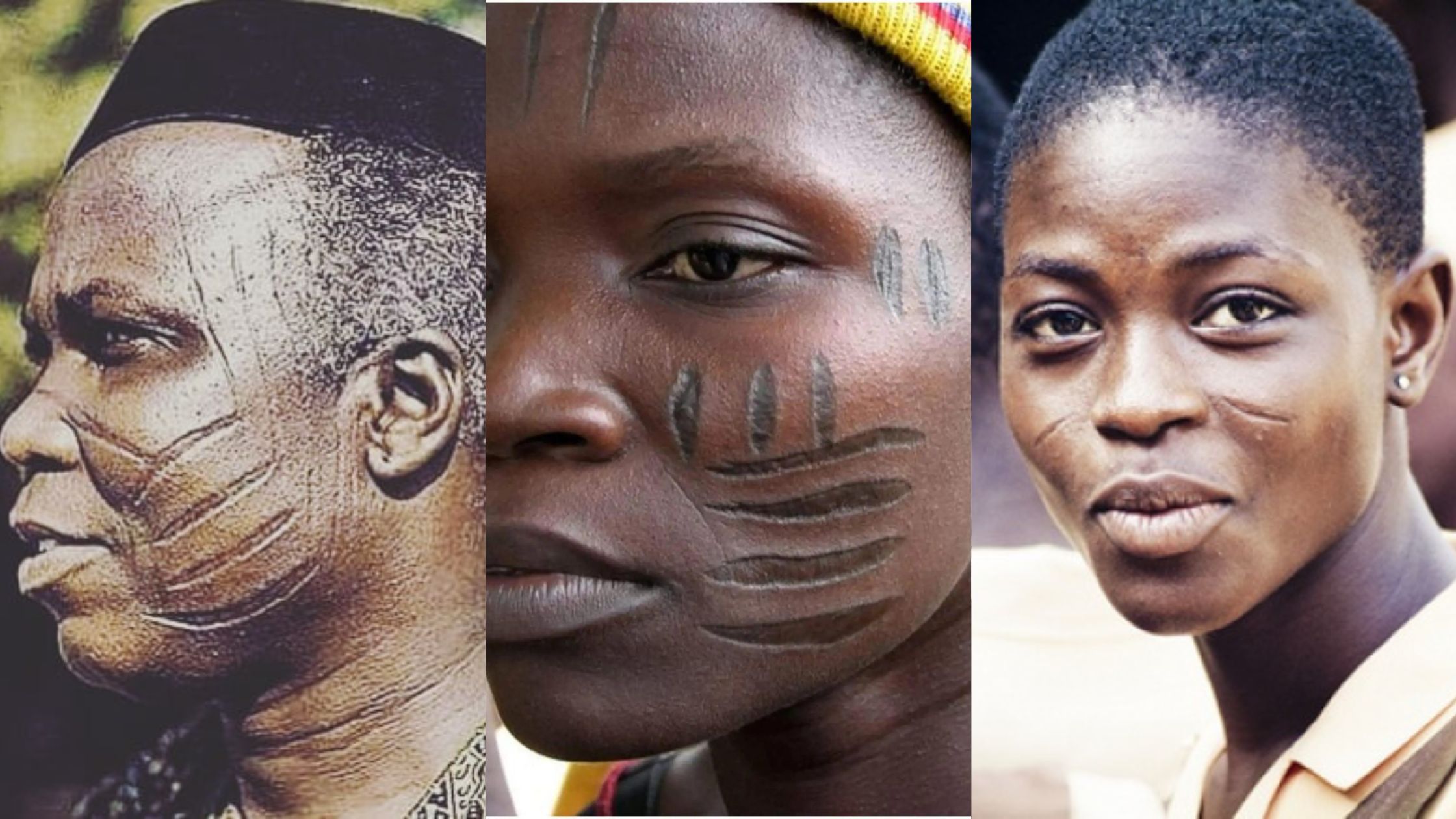Guides
The Origin Of Tribal Marks In Nigeria
Tribal marks are lacerations made on the face practised by parts of the Yoruba and the Hausa tribes in Nigeria. In the olden days, it was practised and was symbolic. In the Yoruba and Hausa Fulani tribes and Benin tribes in Nigeria, these incisions were a form of identity as the different parts of the land and various families had distinct ways of making the lacerations on the face.

Tribal marks are lacerations made on the face practised by parts of the Yoruba and the Hausa tribes in Nigeria. In the olden days, it was practised and was symbolic. In the Yoruba and Hausa Fulani tribes and Benin tribes in Nigeria, these incisions were a form of identity as the different parts of the land and various families had distinct ways of making the lacerations on the face.
Igbo of the southeastern region are not particularly known for tribal marks. However, some parts use marks like ichi, nsibidi, egbugbu, uli, nki and ogbanje. These marks mostly serve spiritual and health purposes.
Tribal marks are noticeable on the body, particularly on the face. Tribal marks are a cultural heritage which has played a significant role in the cultural consciousness of a society.
Tribal marks are usually permanent on the faces of the bearer; it is a way of identification which has been passed down from family, community and royal lineage. It also functions to differentiate one ethnic group from another.
It is believed that tribal marks came into existence in Nigeria during the colonial era when people were being captured and taken into slavery, so members of the society began giving their family members marks for identification or recognition if peradventure they were captured.
The Yoruba tribal marks are part of the Yoruba culture and are usually inscribed on the body by burning or cutting of the skin during childhood. The primary function of the tribal marks is for identification of a person’s tribe, family or patrilineal heritage. Other secondary functions of the marks are symbols of beauty, Yoruba creativity and keeping mischievous children alive (ila Abiku). This practice was popular among the Yoruba people of Nigeria, Benin, and Togo. During the trans-Atlantic slave trade, tribal identification and facial stripes became important. Some repatriated slaves later reunited with their communities by looking at facial stripes.
Each tribe of the Yoruba ethnic group has different inscription patterns which appear in different sizes and shapes at different locations within the face or body. The location and position of the mark’s inscription depend on the tribe and culture. The tribal marks could be inscribed on the stomach, arm, lap or buttocks, but they are usually on the face. There are different styles and patterns of tribal marks for Yoruba people, Pele, Abaja, Owu, Keke, Abaja-olowu and Gombo are the most recognized ones.
Generally in Nigeria, the practice of giving children tribal marks seems to be fading and there are so many factors responsible for it, including civilisation, and fear of HIV/AIDS, as using the same blade to cut the faces of many people helps in the spread of HIV/AIDS.
The use of tribal marks as a means of identification and beautification among the Yoruba tribe is also no longer a norm and some Yoruba states have enacted certain laws that prohibit the use of the marks. Violators of the law are liable to fines and/or imprisonment. In Oyo State, for example, the prohibition of tribal marks is an integral part of the state Child Rights Law, a law that imposes a fine or one-month imprisonment or both for violation. According to the law, “No person shall tattoo or make a skin mark or cause any tattoo/skin mark to be made on a child”.
More Articles on RNN
- Top 10 Nigerian Tribes With Faithful Husbands
- 10 Nigerian Celebrities Who Died Too Young
- Top 5 Nigerian Celebrities Transformations
- 5 Most Patronized Universities In Nigeria
